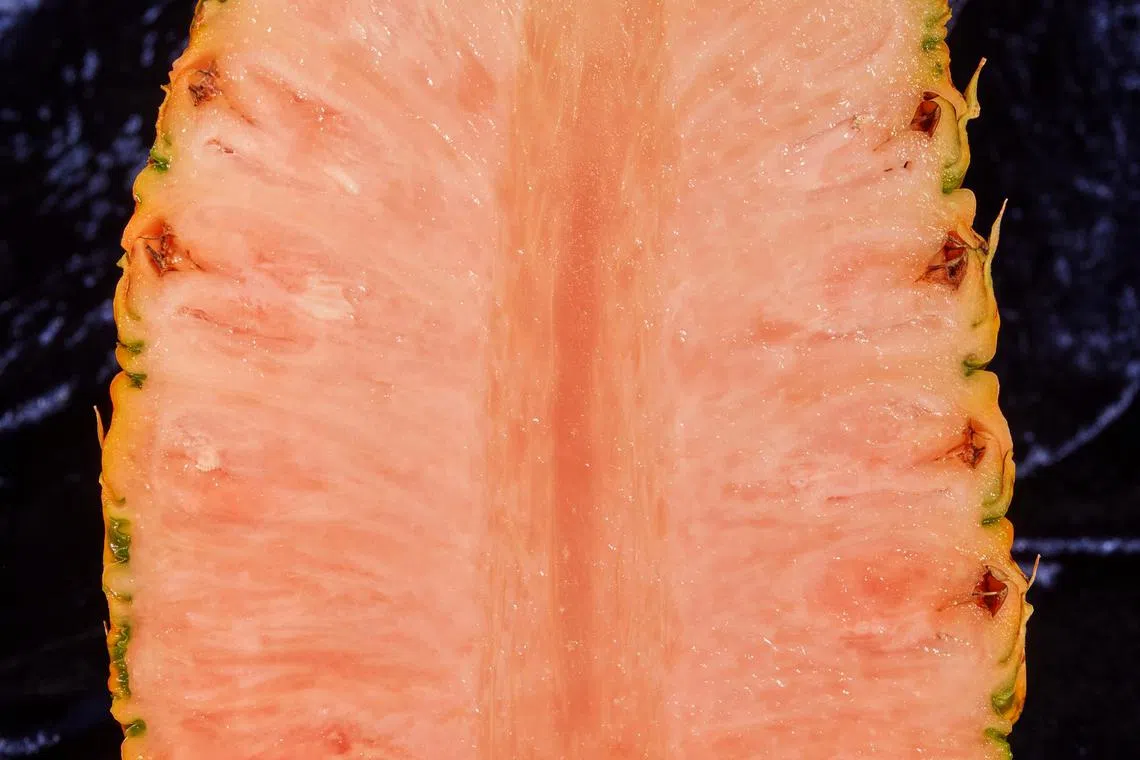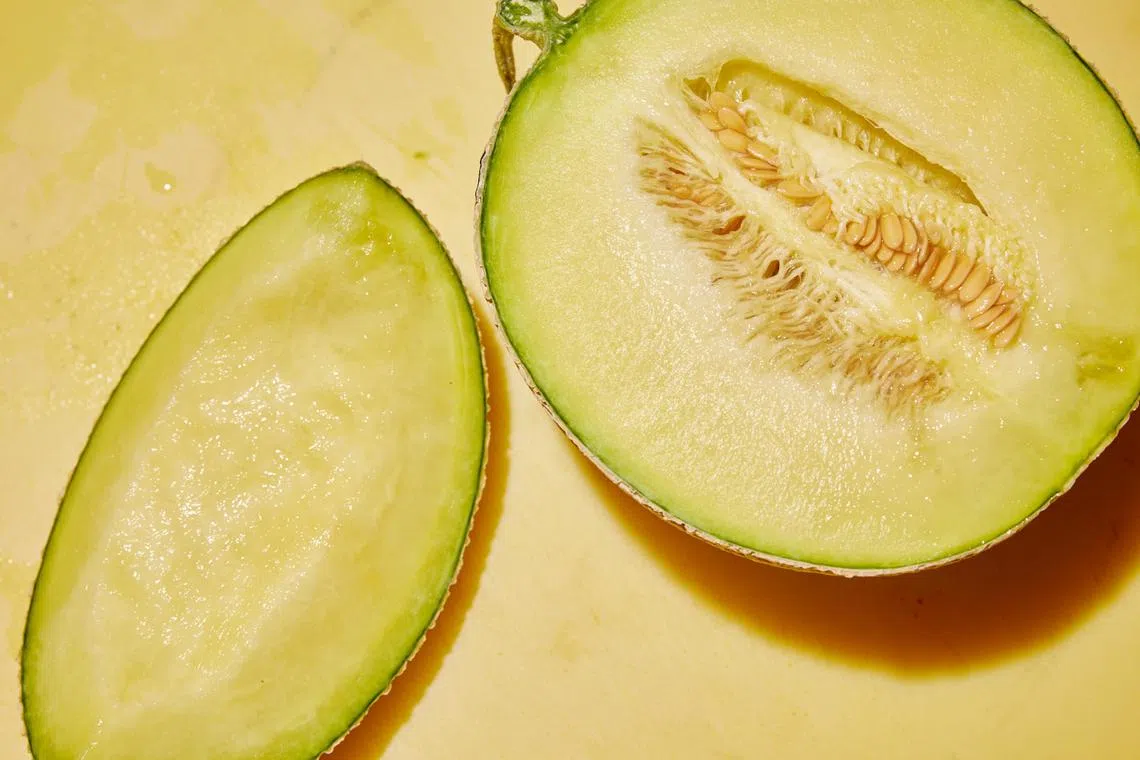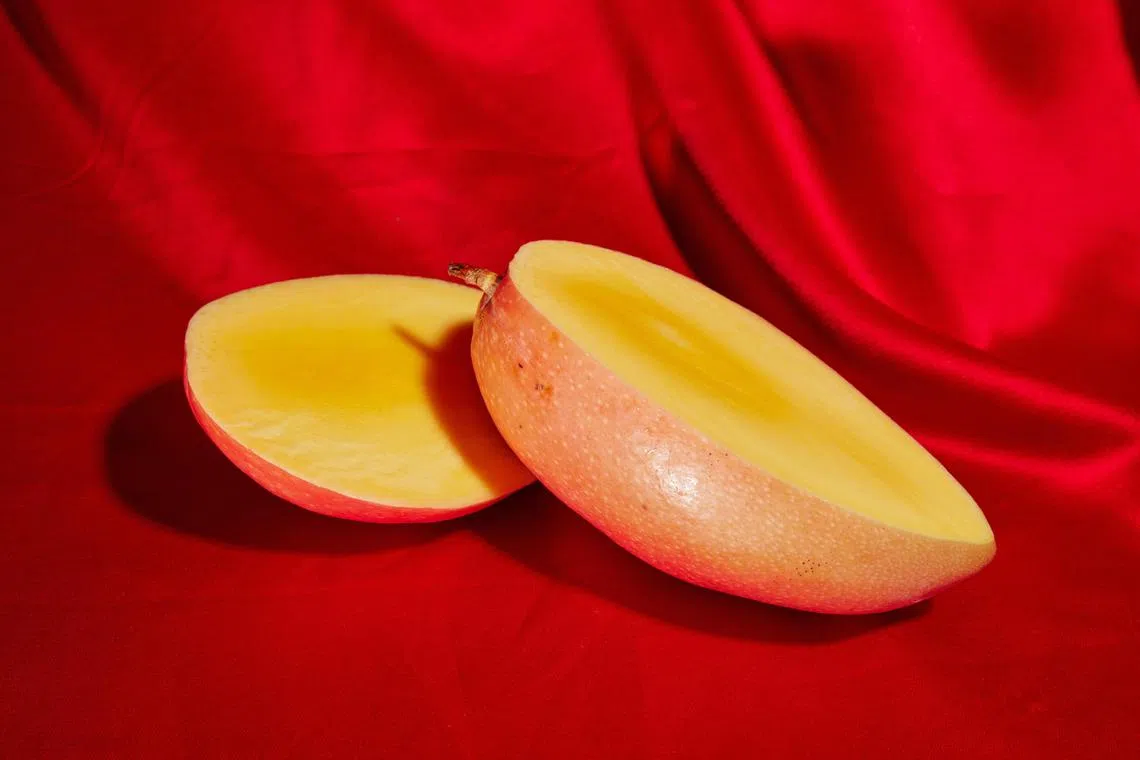The world of luxury fruit: Does a US$156 melon taste sweeter?
Luxury fruits, which have a long history in parts of Asia, especially as gifts, are catching on in the US
A US$396 PINEAPPLE comes tucked into an ornate red box that unfurls like origami and is punched with breathing holes. A US$156 melon, swaddled in foam netting, grew alone on a vine from which every other fruit was pruned, with the aim of making it extra sweet.
Luxury fruits, which have a long history in parts of Asia, are gaining popularity in the United States, as new varieties are being grown and imported, including those developed over several years by companies aiming to market unique-looking and unique-tasting produce. The US$396 pineapple – trademarked as the Rubyglow for its red skin, and extremely limited – recently sold out in the US within a matter of weeks.
Some of the fruits have long been given as gifts, especially in Japan and South Korea. That trend is catching on in the US, as is the taste for flawless berries and melons that travellers may have tried overseas, produce experts said. And as the luxury goods industry has grown, so too has the interest in luxury fruit, said Soyeon Shim, a scholar of consumer and financial behaviour at the University of Wisconsin-Madison.
“The market has become much more global,” she said, adding: “You can buy anything you want.”
Eve Turow-Paul, an author and expert in global food trends, described luxury fruits as being among the “couture food experiences” through which people attempted to make value statements. “Over the last 10 years especially, global food culture has become homogenised,” she said. “How do you continue to one-up other people in this kind of food environment?”
In recent decades, unique produce – including the US$156 melon, known as a Crown Melon; specialty grapes from South Korea prized for their large size and crisp texture; white strawberries from Japan; and mangosteens, a tropical fruit with soft white flesh – has been imported to the US, said Robert Schueller, a spokesperson for Melissa’s Produce, which describes itself as the largest distributor of specialty fruits and vegetables in the country.
The company’s attempts to introduce unfamiliar fruits to the American palate, however, have not always been successful, he added. The star apple, a deep purple fruit native to the Caribbean and Central America; the oca, a yam popular in New Zealand; and a square watermelon – which though it “cut like toast” lacked a superior flavour – all failed to take off, Schueller said. (Melissa’s is now working with a grower in Costa Rica to develop a watermelon that is both box-shaped and sweet.)
Here are some of the fanciest fruits available in the US:
Designer pineapples
The pineapple, a tropical fruit native to South America, historically has been a luxury product in the US and Europe, symbolising imperialism, power and opulence. It was not until the beginning of the 20th century that a plantation in Hawaii made the fruit more widely accessible across North America.

In recent years, a handful of unique, higher-priced pineapples have been introduced to the US, including the Elefante Green Gold pineapple, which is native to Ghana and has white flesh, an edible core, low acidity and is shipped in a box because of its tendency to topple over. It costs about US$26. The Pinkglow pineapple, grown in Costa Rica, was genetically engineered by Fresh Del Monte for its candy-pink flesh and low acidity. It was introduced in 2019 for about US$50 and now costs up to US$29, depending on its size.
This year, after 16 years of development, Del Monte, which distributes produce globally, introduced the Rubyglow pineapple, which has a red outer shell and sweet yellow flesh, to China and the US. The high price is in part because only a few thousand of the fruit were grown this year, but the company has said that the price is likely to drop as production increases. Neither the Pinkglow nor the Rubyglow, both sold by Melissa’s Produce, come with their crowns, which can be used to grow more pineapples.
A singular melon
The Crown Melon, fragrant and sweet, is a specialty muskmelon from Shizuoka prefecture in Japan, which has a warm, sunny climate. Each vine is pruned to grow just a single fruit, concentrating the melon’s flavour.

In Japan, the melon – which has a netted rind, lime green flesh and is analysed for sugar content before being sold – is traditionally given as a gift. Each comes inside a box with its T-shaped stem, as a reminder of the growing process. The melon was only recently approved for import into the US and can cost up to US$156 per fruit.
Although many US buyers are already familiar with the melon, it is gaining broader popularity, said Ayako Yuki, a spokesperson for Ikigai Fruits, which imports the fruit and other luxury Japanese produce into the US. Social media influencers have also helped introduce luxury produce to a global market, she added. “They’re really curious to try out the first bite,” Yuki said.
Coddled strawberries
A pound of non-organic strawberries usually costs just a few dollars. A single luxury berry can cost that much or even more – up to about US$29 each.
Ikigai, the luxury fruit importer, sells a variety of red, pink and white strawberries imported from Japan in boxes ranging from US$89 to US$780. A typical package costs about US$128 and contains 30 large strawberries, the company said. The berries – grown in greenhouses and picked when they are perfectly ripe and sweet – are sometimes swaddled individually to protect them from bumps and bruises.
More types of mangoes
The mango, a tropical fruit native to Asia, was introduced to Florida in the 1800s. But to this day, growing, harvest and import practices mean that the mangoes most common in the US can often be too firm, stringy or tart.

In recent decades, however, the US Department of Agriculture has approved imports from other countries, including from India and Colombia. Some premium mangoes are also grown in Florida and California, though these are not always available in other states. “Some people think that a mango is a mango,” said Schueller, of Melissa’s Produce. “They do not all taste the same.”
The Pink Elephant mango, from Vietnam and sold by Melissa’s, is among the newest of the imported varieties, Schueller said. A single fruit, weighing up to 0.9 kilogram, can cost up to about US$25. Another variety, the Miyazaki Mango, also known as the “Egg of the Sun” and imported from Japan by another retailer, is listed at US$95 for one fruit.
“On the surface, this seems truly unsustainable,” Turow-Paul, the food trend expert, said of the import of luxury fruits to the US, noting that part of what made some of the fruits so costly was the distance they had travelled.
But she said she hoped that US-grown fruits could garner the same excitement. “There’s all sorts of wacky, delicious, beautiful things that grow that we just don’t celebrate,” Turow-Paul said.
She added: “People are open to eating new and novel things.”
Decoding Asia newsletter: your guide to navigating Asia in a new global order. Sign up here to get Decoding Asia newsletter. Delivered to your inbox. Free.
Share with us your feedback on BT's products and services

